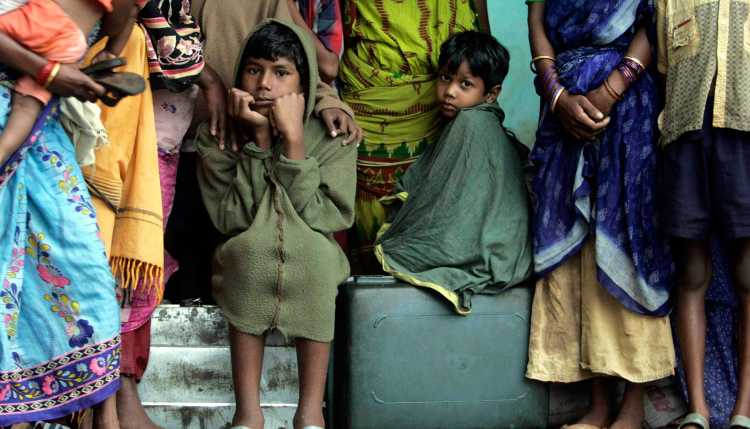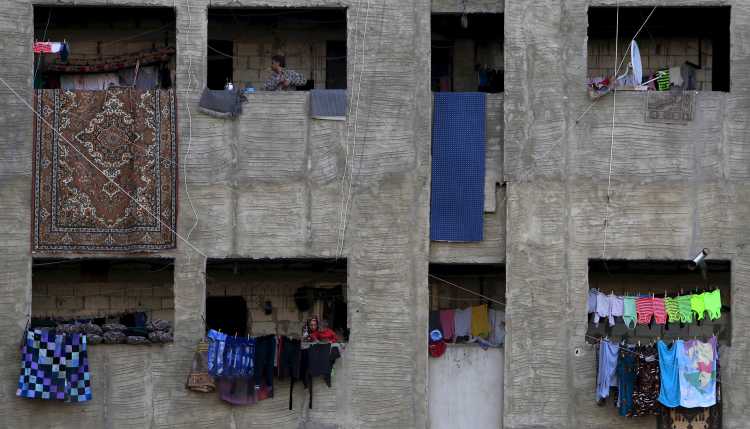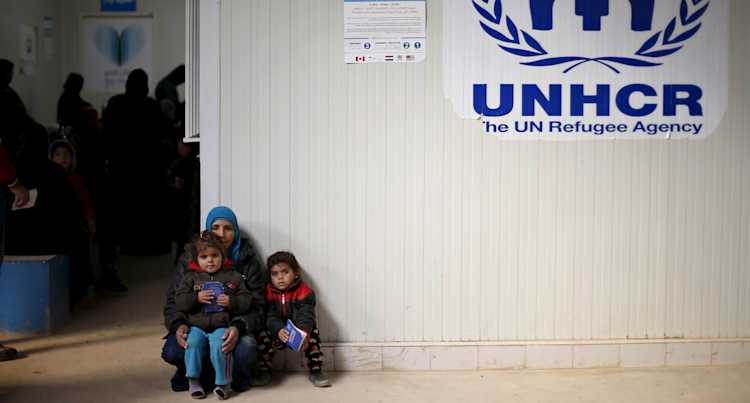- Startseite
- Publikationen
- GIGA Focus
- Gasoline into Fire: Mexico’s Internal Unrest Meets External Threats
GIGA Focus Lateinamerika
Öl ins Feuer: In Mexiko treffen interne Probleme auf Bedrohungen von außen
Nummer 1 | 2017 | ISSN: 1862-3573
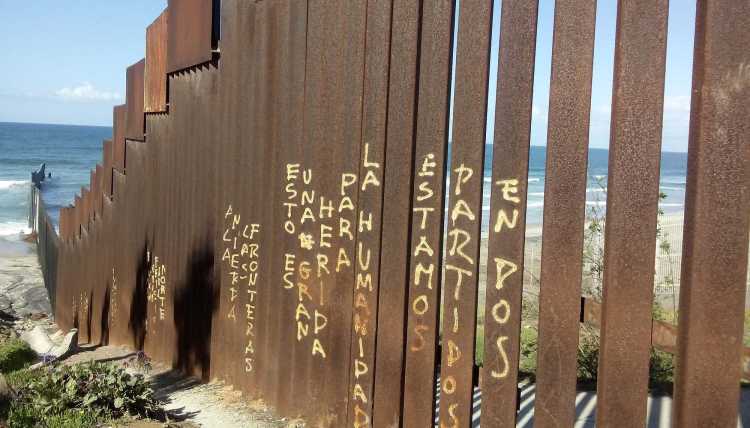
Unmittelbar nach seiner Amtsübernahme griff Präsident Trump seine Drohungen aus dem Wahlkampf in Bezug auf den Handel mit Mexiko und mexikanische Migranten, einschließlich des Baus einer ominösen Mauer, wieder auf. Zuvor hatte die mexikanische Regierung selbst gerade die einzige Säule zerstört, die in den vergangenen anderthalb Dekaden immer noch ein Minimum an sozialem Frieden gesichert hatte: die wirtschaftliche Stabilität.
In Mexiko gärt es, seit die Regierung am 27. Dezember 2016 den Abbau von Subventionen für Elektrizität, Gas und Brennstoff angekündigt und am 1. Januar 2017 in Kraft gesetzt hat. Infolge einer allgemeinen Liberalisierung der Benzinpreise ist mit weiteren Preisanpassungen zu rechnen.
Ein aussichtsloser „Krieg gegen die Drogen“ bildet die Kulisse für grauenvolle Massaker und eine erhebliche Gefährdung von Journalisten. Zusätzlich zur weitverbreiteten Straffreiheit für Kriminelle erleben die Mexikaner, dass auch Politiker, die der Korruption beschuldigt werden, ungestraft davonkommen.
Die ohnehin bescheidenen Voraussagen zum wirtschaftlichen Wachstum im Jahr 2017 verlieren angesichts der Inflation, der Schwankungen des mexikanischen Peso und der Ungewissheit darüber, wie die von Trump angekündigte Politik konkret umgesetzt wird, jegliche Glaubwürdigkeit.
Präsident Peña Nieto hat den Eindruck erweckt, dass er sich selbst in eine außenpolitisch schwache Position gebracht und gegenüber den USA unter Trump so gut wie keinen Verhandlungsspielraum hat. Es ist Trump wiederholt gelungen, mexikanische Unterhändler auszumanövrieren.
Die mexikanische Regierung muss jetzt eine klare Strategie und Lösungsansätze zum Schutz von Mexikanern auf beiden Seiten der Grenze entwickeln, aber auch ein umfassendes Programm zur sozio-ökonomischen, kulturellen und symbolischen Reintegration der Rückkehrer.
Fazit
Die Einschätzung Trumps, dass die Interessen Mexikos denen der USA diametral entgegenstehen, ist falsch: Die mexikanischen Einwanderer in den USA – ob mit oder ohne Dokumente – und der bilaterale Handel sind für ganze Produktionssektoren in den USA von Vorteil und tragen zum Wohlstand der amerikanischen Mittelklasse bei. Die Drohungen Trumps haben der mexikanischen Wirtschaft bereits geschadet und dazu geführt, dass die Diskriminierung von Mexikanern in den USA als legitim angesehen wird. In einem sowohl innenpolitisch als auch außenpolitisch schwierigen Szenario müssen die mexikanischen Unterhändler nicht nur das Wohlergehen mexikanischer Unternehmen im Blick haben (wie im Fall der NAFTA-Verhandlungen), sondern auch das der mexikanischen Bürger, sowohl in Mexiko als auch in den USA.
Mounting Social Discontent in Mexico
In hindsight, seldom has a TIME magazine cover been as misdirected as that in 2014 which portrayed newly elected president Peña Nieto behind a title that stated “Saving Mexico” in capital letters. Three years later, his approval levels are as low as 12 per cent and there is no single socio-economic or political macro indicator that shows a favourable balance for his administration so far.
In the first weeks and months of 2017, social discontent in Mexico has soared as the country has faced mounting inflation due to a massive fall of the Mexican peso against the US dollar and the lifting of subsidies on gas and fuel, which led to price increases of up to 20 per cent as of 1 January. After a number of reports of protests, traffic blockades, and looting were verified in late December, panic spread on social networks, with unverified reports of further turmoil and chaos. Rumours about political opposition “agitators” being the operators of social unrest also spread.
President Peña Nieto reacted to the general unrest by defending the government’s economic and fiscal measures in a televised message on 5 January, in which he also called for national unity and announced a hard approach to violent protestors. Civil society and human rights organisations viewed the message as a challenge to the legitimacy of demonstrations, most of which have been peaceful.
Before the economy began to worsen over the last year, security was the main concern of Mexicans, who had been hard hit by increasing violence for over a decade. Peña Nieto, a new herald of the Partido Revolucionario Institucional (PRI), won the 2014 presidential elections by a margin of 6 per cent, promising much-needed reforms with the agreement of the main opposition parties and a return to security. For many Mexicans, those promises were worth bringing the PRI back to power, after only two administrations in which a different party – the Partido Acción Nacional (PAN) – had occupied the top executive office after 71 years of single-party rule by the PRI. During the 12 years of PAN presidential rule, the PRI still held power in most states of the federation and was represented strongly enough in Congress to block many reform initiatives. Yet three years after the PRI’s presidential comeback, the only security measure taken by Peña Nieto worth mentioning has been the creation of a mostly symbolic federal unit for security and, more recently, the proposal of a new Law of Internal Security. The proposal, however, follows along the lines of the PAN administration’s much-criticised policy of taking the army onto the streets. Instead of returning the military to its barracks and admitting that previous administrations had erred in using it to address a civil affair such as drug trafficking, the PRI has put forward an initiative in Congress with even riskier consequences for human rights and public life, as it proposes to give further guarantees to the military in its actions vis-à-vis the civilian population, and to increase its control over the police force, which is generally perceived as corrupt and inefficient.
To confront civil unrest and in an attempt to restore support from the population, the federal government presented the “Agreement to strengthen the economy and protect families’ economy” (“Acuerdo para el fortalecimiento económico y la protección de la economía familiar”) on 9 January 2017. It includes contingency measures such as decreasing the salaries of top bureaucrats by 10 per cent and temporarily eliminating some of their bonuses. Yet this has not sufficed to curb restlessness in the country. The current economic despair comes on top of the corruption scandals involving top executive officers at the federal and subnational levels which have plagued the Peña Nieto administration from its start. In the four years of Peña Nieto’s presidency, public spending has increased public debt, but there has been no evidence of reduced poverty or inequality, no notable extension or improvement of public services, and no noteworthy infrastructure projects. Mexican authorities lack the internal legitimacy to respond to the economic hardship and social discontent for which they themselves are to blame.
Erratic Foreign Policy
The widespread anxiety in Mexico about Trump’s ascent to power is heightened not only by Mexicans’ insecurity regarding their own government’s ability to defend their interests, but also by concerns about the millions of migrants and Mexican-Americans who have been subjected to rising levels of open discrimination in the USA since Trump’s electoral campaign. As a presidential candidate, Trump vilified Mexicans as rapists and criminals, focused on Mexico as one of the main culprits behind unemployment in economically depressed areas of the United States, promised the swift and radical rewriting of NAFTA, and threatened companies investing in key sectors in Mexico with high levels of taxation. Trump did not wait until his inauguration to act: he demanded that companies in the pharmaceutical and automobile sectors bring jobs back from Mexico to the USA – a threat to which Ford Motor Company seemed to react pre-emptively by cancelling planned investments in new plants in Mexico and relocating others.
According to a recent survey, 75 per cent of Mexicans consider the Mexican president unprepared to deal with the current challenges posed by Trump. Mexico’s foreign policy indeed faces one of its most disgraceful moments in history. The historical barriers – however discursive – that Mexico once erected in its foreign policy to assert independence from its titanic neighbour have come down gradually over the last three decades. Two shameful incidents have occurred in recent months. The first related to Peña Nieto’s invitation to Mr. Trump to visit Mexico during the US electoral campaign, with the alleged intent of signalling that Mexico would cooperate with Washington, whoever was elected, only to be humiliated when Trump asserted immediately upon his return to the USA that the invitation signalled that Mexico would accept his proposals. Former finance minister, Luis Videgaray, the mastermind behind Peña Nieto’s invitation to Mr. Trump, was ousted from the cabinet after the Mexican public vilified him for both the visit and its outcome. However, having subsequently been described by Trump as “brilliant,” Videgaray was reappointed to the cabinet in January to head the Foreign Ministry. He has been trusted to know how to strike the correct tone with Trump and his advisers, yet his placement is seen as sheepish, adding to the perception that the federal government is out of touch with public sentiment in terms of both internal and external policies and has no creative strategy for defending Mexican interests.
The second disgrace occurred in Trump’s first week as a president, when he extended an invitation to Mexican negotiators to go to Washington DC to prepare for a presidential visit by Peña Nieto. In advance of the trip, both Peña and Videgaray announced that they had prepared a clear plan based on a framework of “dignity and respect for Mexico’s sovereignty,” with specific issues to be covered in the negotiations. Videgaray spoke about putting “all topics” on the table, suggesting that those topics that the USA had ignored to date and which had harmed Mexico, such as the illegal arms trade from the USA and cooperation on migration and drug policies, would be put forward by the Mexican side. Yet on the day Mexican negotiators arrived in Washington DC, Trump announced an executive order to build the wall, effectively impeding negotiation on this topic. Adding insult to injury, hours after Mexican politicians and commentators from across the political spectrum demanded on Twitter that President Peña Nieto cancel his visit given Trump’s announcement, Trump wrote on the same medium that Mexico’s president should not visit the USA if he did not accept the wall. Too little and too late, Peña issued a statement cancelling his trip, noting, however, that Mexico remained open to cooperation with the USA. So far, only the secretary of economy, Ildefonso Guajardo, has dared to clearly state – on 19 February – that there is as much at stake for the USA as for Mexico if the US government develops a hostile stance, as Mexico would have fewer incentives to cooperate with the USA on migration and drug trafficking. Guajardo is indirectly alluding to the Iniciativa Mérida on security matters, and to Programa Frontera Sur, which effectively meant extending US policies into Mexican territory and towards the southern Mexican border. Within the framework of Programa Frontera Sur, Mexico has developed a schizophrenic position on migration matters over the last three years, simultaneously demanding fair treatment of Mexicans abroad while adopting a tough stance towards Central American migrants, blocking their transit through Mexico and returning them to their countries of origin, even when they are fleeing from violence.
Besides the trade agreements and Mexico’s international reputation, it is Mexican people who are at stake. Millions of Mexicans in Mexico are already suffering from economic hardship, while millions of Mexicans in the USA are suffering from discrimination, regardless of status, and are especially vulnerable to unemployment, abuse, or deportation in the case of lacking residency documentation. For many in Mexico who back in 2000 shared President Fox’s aspiration to see an open border in 10 years’ time, the scenario of a “big beautiful wall” promised by Trump is nothing short of dystopia. Mexicans know too well that a wall already exists on any part of the border but the desert, and in the desert a virtual wall and patrols are in place. In some sections the physical wall is a fence that goes into the sea; in other sections it is a double wall, much like the Berlin wall, that has already separated families for decades.
Heightened Vulnerability of Mexicans in the USA
Over the last three decades Mexico has been one of the main sources of emigration in the world; however, 98 per cent of its emigrants are concentrated in the USA. Migration from Mexico northwards is a very old phenomenon, with socio-economic root causes such as growing wage differentials and demographic complementarities. Historically, Mexicans crossed the border more or less fluidly depending on the epoch: for some years, bilateral agreements (notably the “bracero” programme) determined the migration corridor, but for much longer periods the border was porous, allowing a pattern of circular/seasonal migration.
Migration from Mexico to the USA grew and changed in the 1980s, when economic crises in the former expelled a population with more diverse profiles to more destinations in the USA and with the intention to remain. In this sense, emigration was an important safety valve. Further economic crises and the economic integration promoted by NAFTA after its entry into force in 1994 increased the intensity of undocumented emigration by a population that was suffering from ever more precarious situations in rural areas and widening inequality between rural and urban areas (Consejo Nacional de Población 2010).
In the USA, border control operations to curb irregular border crossings began in the early 1990s. Instead of deterring emigration, they simply pushed emigrants to try riskier routes, steeply increased the fees of “coyotes” and the number of deaths at the border, and made earlier patterns of temporary migration less cost-effective (pushing emigrants into prolonged stays in the USA). By 2013, the number of Mexicans residing in the USA had risen to 11.8 million (Consejo Nacional de Población 2014: 36). In the last nine years, however, the emigration rate has decreased (only 7 per cent of Mexicans who reside today in the USA entered after 2008). The causes of emigration have become more diverse, with more and more Mexicans fleeing the violence produced by an unequal “war on drugs” waged with the intervention of US agencies carrying out intelligence operations with branches of the Mexican armed forces and providing the army with formal “support” in the form of outdated machinery within the framework of the above-mentioned Iniciativa Mérida. For their part, the drug cartels are equipped with the new, high calibre arms smuggled from the USA and are undertaking an increased portfolio of criminal activities.
Mexican migrants fear that remittances will be one of the channels that will be affected first by Trump’s hostile stance towards Mexico, either through documentation restrictions or taxation, which partly explains why the level of remittances to Mexico has increased since Trump’s victory – the phenomenon is also partly a reflection of the depreciation of the Mexican peso. Mexico was once the top receiver of remittances in the world (in 1996) and even though it has since dropped to fourth place (IME 2016), remittances constitute a significant source of its foreign currency income alongside oil exports and foreign direct investment – even surpassing them in some years. In contrast to other countries in the Central American and Caribbean area, however, the relative weight of remittances has barely ever reached a level equivalent to 3 per cent of GDP, making it implausible to say that Mexico’s economy depends on remittances. Yet this does not mean that the prospect of reduced remittances or taxes on remittances would be any less tragic for the millions of families in Mexico that receive them, and who tend to be those living in highly marginalised areas (Consejo Nacional de Población 2014: 140).
Challenges for Mexican Emigrant Policies
So far, no Mexican government has succeeded in making a plausible case for a migration agreement that alleviates the enormous vulnerability of undocumented Mexican migrants in the USA, recognises their contributions to the US society and economy, and accords them a status that would allow them to leave the shadows and move back and forth across the border, as they used to do before the border was securitised. The last serious attempt at such a comprehensive deal was raised during Fox’s administration but soon lost any hope of fruition following the events of 9/11. The hopes for such an agreement have never been dimmer than today. Trump’s position endangers the executive actions that President Obama undertook, which at least benefited those undocumented people who had been taken to the USA as minors. Those measures were far from being an amnesty. The Deferred Action for Childhood Arrivals (DACA) temporarily prevented the deportation of migrant youths and allowed them to obtain a social security number (tied to social security contributions), which in turn gave them the chance to legally apply for scholarships and authorised them to work – though only upon demonstrating continued enrolment in school and the absence of criminal records – with reapplication necessary every two years. The “Dreamers” social movement, which brought to light the claims of migrant youths who had not taken the decision to migrate themselves, was the driver of this important yet fragile initiative.
For over 20 years the Mexican state has been a frontrunner in developing policies to protect emigrants living abroad, with an unparalleled consular network in the USA offering an impressive array of assistance programmes. GIGA research (Pedroza, Palop, and Hoffmann 2016a) shows that Mexico is in the top three countries in Latin America in terms of developing programmes for emigrants across a myriad of policy areas, especially in the economic sphere. Beginning in the 1990s Mexican governments at all levels took a proactive approach towards Mexicans in the USA as an ever more complicated bilateral relationship seemed to grow into deeper integration, and also out of a heightened awareness that those emigrants are indeed a valuable resource in terms of their political potential for mobilisation and their capacity to remit and invest in their places of origin (Délano 2011). The richness of these undertakings on the part of the Mexican state cannot be underscored: Mexico has given its emigrants voting rights in Mexico in ever more elections, including the right to be elected in some states, which is quite rare in the world. More than that, Mexico helps its emigrants acquire voting rights in the USA through courses that prepare eligible Mexican legal residents for naturalisation. Over the last two decades the Mexican consular network in the USA has managed to painstakingly secure deals to give Mexican migrant communities some fragile rights at the local level, such as the possibility of getting a driver’s license or attention at some clinics. The success of these local initiatives is owed in part to the discreetness of the Mexican government regarding them and in part to the flexibility that allowed consuls to devise strategies tailored to every community context. Today, even these policies are at risk due to the hostile environment for implementation, the threat of more policing of migration status, and a generalized xenophobic atmosphere.
Lost in Migration
GIGA research has also found that until 2014 Mexico had remarkably few return policies (Pedroza, Palop, and Hoffmann 2016b: 247–249). These consisted of minimal assistance to get returned emigrants back to their localities of origin, but they were neither appropriate to the numbers of returnees nor to their profiles. Mexico had concentrated its economic policies in the areas of remittance promotion (e.g. fee controls and trans-local financial channels for remitting money), co-development programmes in communities of origin that required emigrants to donate a share of the cost, and investment schemes. When it came to emigrants’ return, the programmes devised by Mexican authorities focused on the return of highly qualified emigrants only, in the form of “brain gain/recovery” programmes and improvements in the recognition of qualifications. This contrasts with the profile of most returnees from the USA, however, the overwhelming majority of whom have a maximum of secondary education.
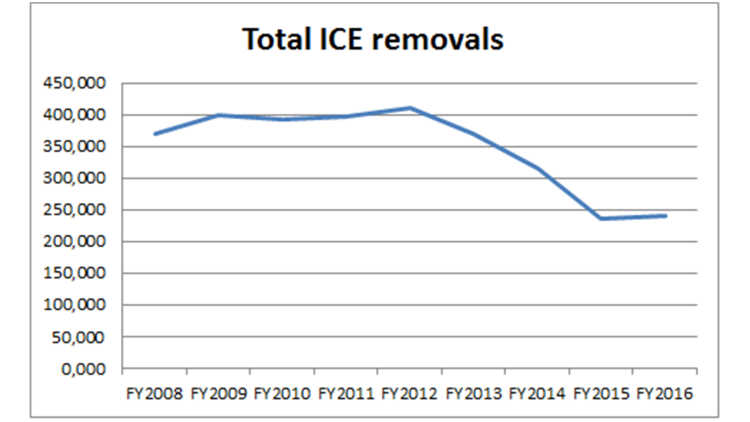
The prospect of a massive return should, however, not be a surprise to Mexican authorities. Since 2008 the “removal” statistics of the border enforcement authorities in the USA have revealed staggering numbers. The number of removals includes deportations from both the interior and the border, which is important to keep in mind since the Obama administration focused on removals along the border, with interior deportations having shrunk to less than 30 per cent of the total in 2016. Removals under Obama also addressed mostly those with criminal records: 59 per cent in 2016, up from 31 per cent in 2008.
Thus, neither the prospect of massive removals nor the idea that the priority behind deportations from the USA is to “remove” those with criminal records are new – and they are not Trump’s ideas. Critically, what is at stake regarding deportations with the change in the top executive office in the USA is that they affect more people who have long-standing family ties in the USA, who have resided there for a long time, and who have weaker links with Mexico. This represents a challenging scenario for Mexico because this group’s requirements are different: from their language skills to their capacity to integrate and have their skills recognised in the Mexican labour market, in lower qualification levels and occupations as well (i.e. not only higher-education degrees). Mexican authorities still have to massively expand their capacity in this area of migration policy .
It is about time that the Mexican government take action in this regard. Mexicans have been returning to their country by the hundreds of thousands, not only due to forced repatriation or deportations (which is what the ICE statistics above reveal), but also due to the recent economic deceleration and recession in the USA. As late as 2014 the “Programa Somos Mexicanos” foresaw an element of return integration, but its reach remains modest. Mexican senators from all parties have taken initiative to design a proposal to designate resources for a comprehensive return programme, nicknaming it “Monarca” in honour of the butterflies that migrate northwards and come back to Mexico every year. But while butterflies come and go yearly, what Mexico needs is a long-term plan that will enable returnees to reintegrate into all aspects of Mexican society with dignity and respect, giving them a credible chance to stay – that is, not pushing them to re-emigrate.
Outlook and Recommendations
Mexicans in the USA face growing stigmatisation. Those who reside there without legal authorisation have always been wary of coming close to authorities of either of the two states to which their residence and belonging relate: the USA, because its authorities may prosecute them, and Mexico, because it is the country that failed them in the first place. It has taken time for the Mexican consular network to instil a degree of confidence in Mexican communities abroad. It has also taken time for those communities to organise and grow self-confident, to the point that they have been ready, only recently, to “come out” thanks to the momentum built by the “Dreamers” movement and the DACA. Now, they have every reason to feel afraid again. As Mexican citizens, however, they also have every reason to repel any link to Mexico, not only because of the cowardly stance of the Mexican government vis-à-vis Trump but also because of the shameful performance of top Mexican politicians, which echoes the prejudices against which they fight every day.
The scenario today is grim for Mexicans on either side of the Río Bravo/Grande border. It is high time that their government took permanent action with regard to its own spending, its absurdly high salaries, and privileges. It is time it took action against politicians who have been proven to be corrupt and criminal. It is time it prepared to embrace its migrant citizens, should they return of their own accord or be returned by the USA, with the same effort it put into developing policies to lure them to donate and remit money. It is time it placed professional diplomats trained to deal with crises such as this at the top levels of its foreign office, instead of “trusted” but inexpert persons. It is time it searched for alliances in other regions, especially in Latin America, and called for international solidarity against Trump’s outrageous policies in matters of migration and deportation. For Mexicans everywhere it is high time that their government prepared for the worst, instead of just submissively hoping for the best.
Fußnoten
Literatur
Consejo Nacional de Población (2010), Índices de intensidad migratoria: México-Estados Unidos 2010. El estado de la migración, México, D.F.: CONAPO, www.conapo.gob.mx/work/models/CONAPO/intensidad_migratoria/pdf/Migracion_Mex_EU.pdf (23 January 2017).
Consejo Nacional de Población (2014), Anuario migración y remesas 2014, Mexico, D.F.: CONAPO, Fundación BBVA Bancomer, www.conapo.gob.mx/work/models/CONAPO/Resource/2095/1/images/Anuario_Migracion_y_Remesas_2014.pdf (19 April 2016).
Délano, Alexandra (2011), Mexico and Its Diaspora in the United States: Policies of Emigration since 1848, Cambridge: Cambridge University Press.
Grupo Reforma (2017a), Encuesta Reforma: Pesimismo y desconfianza, Mexico City, http://gruporeforma-blogs.com/encuestas/?page_id=2635 (20 January 2017).
Grupo Reforma (2017b), Encuesta Reforma: Evaluación al Presidente, Mexico City, http://gruporeforma-blogs.com/encuestas/?page_id=2635 (18 January 2017).
IME (2016), Reporte de remesas: Cifras al cierre de 2014, Mexico City: Instituto de los mexicanos en el exterior, 24 June, www.ime.gob.mx/es/remesas (23 October 2016).
Pedroza, Luicy, Pau Palop, and Bert Hoffmann (2016a), Calling Abroad: Latin America Reshapes Its Emigrant Policies, GIGA Focus Latin America, 3, Hamburg: GIGA, www.giga-hamburg.de/de/publikationen/11567363-calling-abroad-latin-america-reshapes-emigrant-policies (21 February 2017).
Pedroza, Luicy, Pau Palop, and Bert Hoffmann (2016b), Emigrant Policies in Latin America and the Caribbean, Santiago de Chile: FLACSO-Chile, www.giga-hamburg.de/de/publikationen/11583535-emigrant-policies-latin-america-caribbean (20 February 2017).
US Immigration and Customs Enforcement (2016), Fiscal Year 2016 ICE Enforcement and Removal Operations Report, Washington, DC, www.ice.gov/sites/default/files/documents/Report/2016/removal-stats-2016.pdf (20 January 2017).
Gesamtredaktion GIGA Focus
Redaktion GIGA Focus Lateinamerika
Regionalinstitute
Forschungsschwerpunkte
Wie man diesen Artikel zitiert
Pedroza, Luicy (2017), Öl ins Feuer: In Mexiko treffen interne Probleme auf Bedrohungen von außen, GIGA Focus Lateinamerika, 1, Hamburg: German Institute for Global and Area Studies (GIGA), http://nbn-resolving.de/urn:nbn:de:0168-ssoar-51493-1
Impressum
Der GIGA Focus ist eine Open-Access-Publikation. Sie kann kostenfrei im Internet gelesen und heruntergeladen werden unter www.giga-hamburg.de/de/publikationen/giga-focus und darf gemäß den Bedingungen der Creative-Commons-Lizenz Attribution-No Derivative Works 3.0 frei vervielfältigt, verbreitet und öffentlich zugänglich gemacht werden. Dies umfasst insbesondere: korrekte Angabe der Erstveröffentlichung als GIGA Focus, keine Bearbeitung oder Kürzung.
Das German Institute for Global and Area Studies (GIGA) – Leibniz-Institut für Globale und Regionale Studien in Hamburg gibt Focus-Reihen zu Afrika, Asien, Lateinamerika, Nahost und zu globalen Fragen heraus. Der GIGA Focus wird vom GIGA redaktionell gestaltet. Die vertretenen Auffassungen stellen die der Autorinnen und Autoren und nicht unbedingt die des Instituts dar. Die Verfassenden sind für den Inhalt ihrer Beiträge verantwortlich. Irrtümer und Auslassungen bleiben vorbehalten. Das GIGA und die Autorinnen und Autoren haften nicht für Richtigkeit und Vollständigkeit oder für Konsequenzen, die sich aus der Nutzung der bereitgestellten Informationen ergeben.



